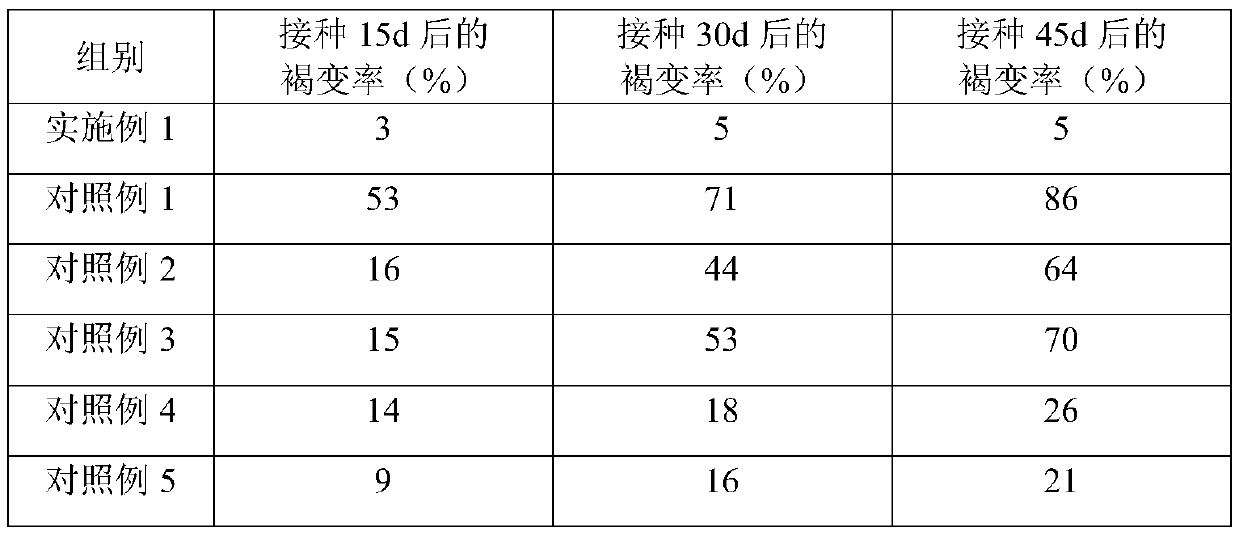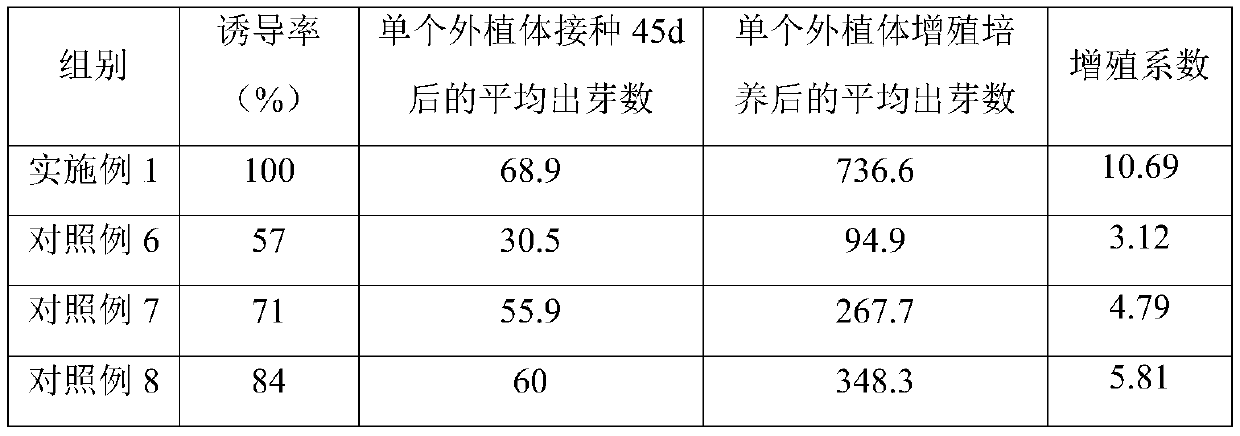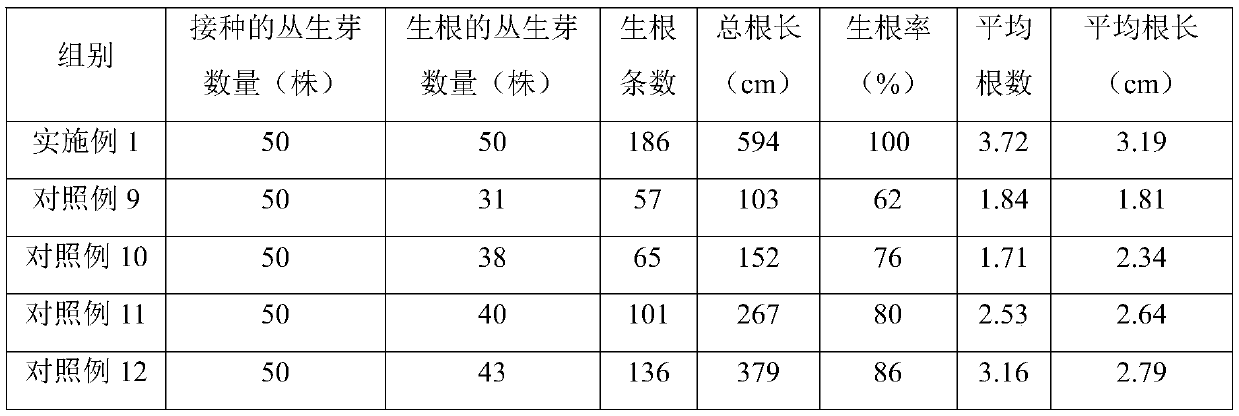Tissue culture method of cymbidium hybridum
A technology for tissue culture and Cymbidium, applied in the field of artificial propagation and cultivation of plants, can solve the problems of complicated operation, low reproduction coefficient and high required cost, and achieve the effects of simplifying production procedures, improving culture efficiency and increasing reproduction speed.
- Summary
- Abstract
- Description
- Claims
- Application Information
AI Technical Summary
Problems solved by technology
Method used
Image
Examples
Embodiment 1
[0030] (1) Preparation and pretreatment of explants:
[0031] Select the peduncle of Cymbidium cymbidium that has bloomed and grown well, cut it from the base, and divide it into small sections of 3 cm; first treat the peduncle at 35°C for 5 minutes, then at 45°C for 5 minutes, and cool it naturally. Soak in a mixed solution of monoglyceride citrate (10g / L) and astaxanthin (5g / L) for 30min, take it out and blot dry with filter paper; rinse the pedicels fully under running water, put in 0.1% chlorine Soak in mercuric solution for 30 minutes, then rinse with sterile water for 5 times, and finally dry the water with sterile filter paper to obtain explants for later use.
[0032] (2) Induction and proliferation of clustered buds:
[0033] Inoculate the explants into a special medium to induce clustered buds. The formulation of the medium is: MS medium, sodium nitrophenolate 1mg / L, Cymbidium leaf extract 100mL / L, agar 8g / L; The culture temperature is 28°C, the light intensity is ...
Embodiment 2
[0039] (1) Preparation and pretreatment of explants:
[0040]Select the peduncle of Cymbidium cymbidium that has bloomed and grown well, cut it from the base, and divide it into small sections of 2 cm; first treat the peduncle at 30°C for 10 minutes, then at 42°C for 10 minutes, and cool it naturally. Soak in a mixed solution of monoglyceride citrate (5g / L) and astaxanthin (10g / L) for 60min, take it out and blot dry with filter paper; rinse the pedicels fully under running water, put in 0.1% chlorine Soak in mercuric solution for 30 minutes, then rinse with sterile water for 5 times, and finally dry the water with sterile filter paper to obtain explants for later use.
[0041] (2) Induction and proliferation of clustered buds:
[0042] Inoculate the explants into a special medium to induce clustered buds. The formulation of the medium is: MS medium, sodium nitrophenolate 1mg / L, Cymbidium leaf extract 100mL / L, agar 8g / L; The culture temperature is 25°C, the light intensity is...
Embodiment 3
[0048] (1) Preparation and pretreatment of explants:
[0049] Select the peduncle of Cymbidium cymbidium that has bloomed and grown well, cut it from the base, and divide it into small sections of 5 cm; first treat the peduncle at 38°C for 2 minutes, then at 50°C for 1 minute, and cool it naturally. Soak in a mixed solution of monoglyceride citrate (15g / L) and astaxanthin (2g / L) for 10min, take it out and blot dry with filter paper; rinse the pedicels fully under running water, put in 0.1% chlorine Soak in mercuric solution for 30 minutes, then rinse with sterile water for 5 times, and finally dry the water with sterile filter paper to obtain explants for later use.
[0050] (2) Induction and proliferation of clustered buds:
[0051] Inoculate the explants into a special medium to induce clustered buds. The formulation of the medium is: MS medium, sodium nitrophenolate 1mg / L, Cymbidium leaf extract 100mL / L, agar 8g / L; The culture temperature is 30°C, the light intensity is 2...
PUM
| Property | Measurement | Unit |
|---|---|---|
| Concentration | aaaaa | aaaaa |
Abstract
Description
Claims
Application Information
 Login to View More
Login to View More - R&D
- Intellectual Property
- Life Sciences
- Materials
- Tech Scout
- Unparalleled Data Quality
- Higher Quality Content
- 60% Fewer Hallucinations
Browse by: Latest US Patents, China's latest patents, Technical Efficacy Thesaurus, Application Domain, Technology Topic, Popular Technical Reports.
© 2025 PatSnap. All rights reserved.Legal|Privacy policy|Modern Slavery Act Transparency Statement|Sitemap|About US| Contact US: help@patsnap.com



